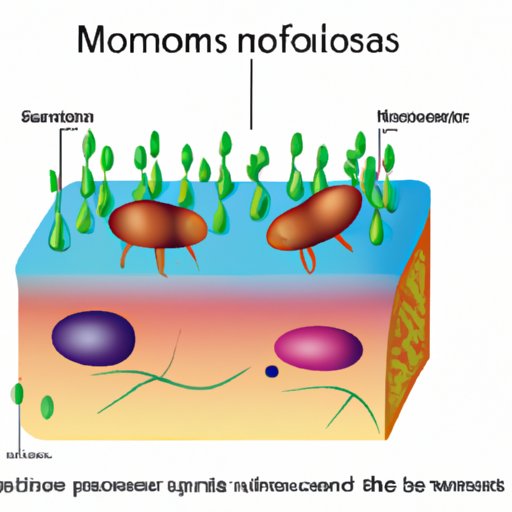Introduction
If you have taken a basic biology course, then you have probably learned about osmosis. Osmosis is a crucial process that occurs in biological systems and plays a significant role in maintaining balance and integrity in biological systems. Understanding osmosis is critical not only for understanding fundamental biological principles but also for solving related problems. This article aims to provide a beginner’s guide to understanding osmosis in biology.
A Beginner’s Guide to Understanding Osmosis in Biology
Osmosis is a crucial process that occurs in biological systems where water moves from an area of high concentration to that of low concentration across a selectively permeable membrane. It is a passive process that does not require any external energy to occur. Understanding osmosis requires some basic concepts on concentration gradient and selectively permeable membranes.
Concentration gradient refers to the difference in concentration of solutes on either side of a membrane. In the context of osmosis, solutes refer to substances dissolved in water. Tonicity refers to the solute concentration of a solution compared to another. For instance, a hypertonic solution has a higher concentration of solutes compared to a hypotonic solution.
A selectively permeable membrane is a biological membrane that only allows certain substances to pass through it. In the context of osmosis, water can pass through a selectively permeable membrane, while solute particles cannot.
Examples of osmosis in biological systems include red blood cells placed in different types of solutions or cells in the stomach lining. When cells are kept in a hypertonic solution, water moves out of the cell causing it to shrink, while in a hypotonic solution, water moves into the cell, causing it to swell.
The Importance of Osmosis in Maintaining Balance in Cells
Homeostasis refers to a state of equilibrium in which internal conditions of living organisms remain constant. Osmosis plays a crucial role in maintaining homeostasis by ensuring that dissolved substances do not accumulate to harmful levels. For instance, the human kidney maintains homeostasis by regulating the movement of water and solutes through osmosis.
The impact of osmosis on cell size and shape is vital towards cell functioning. For instance, in plants, osmosis is important for maintaining turgor pressure, which helps to maintain cell shape and plant structure. Different types of solutions affect cells differently. Hypotonic solutions can lead to lysis of cells, while hypertonic solutions can cause cells to shrink.
How Osmosis Affects Living Organisms and Their Survival
Water, as a universal solvent, has various essential roles in biological systems. Osmosis is involved in the movement of water across semipermeable membranes in organisms, hence playing a crucial role in maintaining balance and ensuring the survival of organisms. For instance, osmosis helps terrestrial organisms maintain water content in their bodies.
The role of osmosis in animal and plant survival is crucial. In animals, osmosis is involved in the regulation of blood flow, maintenance of blood volume and electrolyte balance. In plants, osmosis is involved in water uptake, nutrient uptake, turgor pressure maintenance and cell growth.
The Way Osmosis Is Involved in the Process of Kidney Dialysis
The kidney plays a crucial role in the removal of waste products and excess water from the body. When kidneys fail, dialysis is required to help remove waste products from the body. Dialysis works through a process of diffusion and osmosis. Dialysis involves selectively permeable membranes to filter out waste products and excess water from the blood, allowing the blood to return to the body.
Osmosis as an Important Factor in Plant Growth and Water Uptake
Osmosis plays a crucial role in plant growth and water uptake. Plants require water for metabolic processes, and the presence of water in plant cells provides necessary turgor pressure to maintain cell shape and plant structure. The process of root water uptake occurs through osmosis and helps to transport nutrients from the soil across the cell membrane into plant cells.
The Different Types of Osmosis and Their Biological Significance
Hypertonic, hypotonic, and isotonic solutions are the three types of osmosis that exist in biological systems. Hypertonic solutions have higher solute concentration, while hypotonic solutions have lower solute concentration. Isotonic solutions have equal solute concentrations to each other. Biological processes involving osmosis include the movement of water in red blood cells and kidney function.
Conclusion
Osmosis is a critical process in maintaining balance and integrity in biological systems. Understanding osmosis is essential in solving related problems and developing solutions to biological problems. Osmosis plays a significant role in maintaining homeostasis in living organisms and ensuring their survival. This article has covered various aspects of osmosis in biology, including its definition, importance, and role in biological processes. Further reading or study on osmosis is recommended for deeper understanding.
